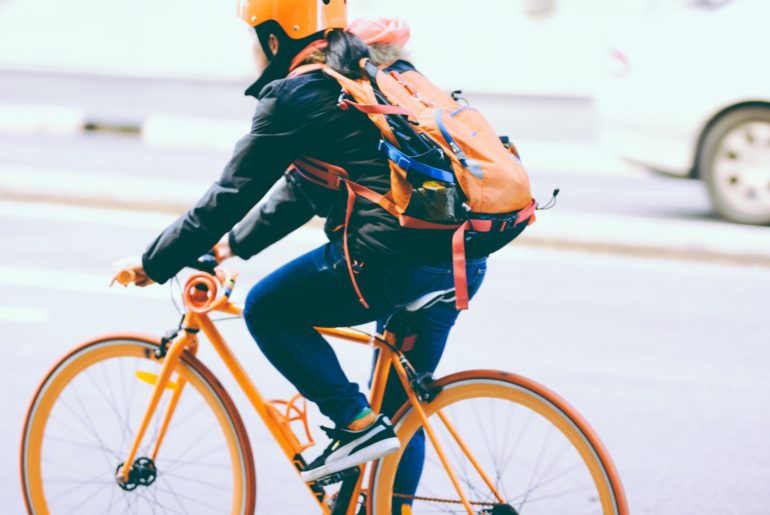Six Strategies for Sitting Less Scratching your head on how your team can BeUpstanding? A recent study by Hadgraft and colleagues and published in the journal BMC Public Health, explored office workers attitudes around reducing workplace sitting. They also sought out workers opinions on a variety of strategies aimed at reducing occupational sitting, which were commonly identified from previous workplace interventions, and their perceived barriers to achieving this in the workplace. A number of strategies were viewed as acceptable and likely to be adopted by workers with some of the strategies addressing multiple influences on sitting and catering to a range of different jobs and preferences. Why not give some of the strategies a try in your workplace! Make use of standing meeting. Sick of sitting through endless meetings? Look to change it up by changing your posture. A standing meeting can be used for a quick check in with the team, while putting stand and stretch breaks into the agenda can help your team reset and refocus. Why not step it up by having a walking meeting for those one-on-one catch ups! Communicating face-to-face. Whenever there’s a short message to be conveyed to a co-worker, employees can tell the…
What Makes A Good Champion?
Are you interested in becoming a workplace champion? Maybe you are looking for someone to assume this role in your workplace but you are unsure where to start. You might ask yourself what makes a ‘good’ workplace champion? Previous research suggests that the most effective workplace champions are those who have a genuine passion for health and wellbeing and are enthusiastic about the opportunity to inspire others towards a healthier lifestyle (Healy et al., 2018). They must also be committed to making long-term positive health changes in their workplace and display a good relationship with their peers. It could be someone that has, or is eager to gain, some experience in managing similar projects. Health and safety representatives are often chosen for this position because it coincides with their goals, namely to create a safer, healthier workplace. However, we must also consider the individual’s capacity to adopt this role. Do they have the time and resources to engage fully with the program within the confines of their own job? Or will it fall into their periphery? These are just a few of the things that must be considered before electing a workplace champion. More general personality traits like outgoingness and…
“Research commercialisation: Tips for starting your journey”
The following article, written by Matt Frith – one of our BeUpstanding™ team members, and managing director and founder of Kin8 – was originally published in The Research Whisperer on May 29, 2018. Research commercialisation can be daunting, but in a landscape of dwindling government funding and ever-shifting technological and commercial realities, it can be a powerful way to bring new ideas and change into the world. For researchers and academics, however, the businesses, people and language can be so different that it’s almost alien. The way a researcher or academic thinks, the goals they have to achieve in their career, are very different to those of a corporate department’s director or CEO. So, how do you begin to feel comfortable exploring the world of research commercialisation? For this post, we’ve put together some detailed tips, based on our experience working with both researchers and corporate partners. The biggest barriers are often emotional, so these tips are designed to get you both thinking and feeling, along with actions, to start your path forward. You have value. We can tell you right now that someone in the corporate sector values what you are doing and what you have. You have intellectual property, processes, team members,…
You should stand in meetings – don’t worry about what others might think
The following article, written by Benjamin Gardner, Lee Smith, and Louise Mansfield, was originally published in The Conversation on July 2, 2018. Standing in meetings may be good for our health, but it can also make those that are standing feel self-conscious, anxious about how others perceive them, and disengaged from the meeting. These findings, taken from our recent study, suggest that efforts to encourage office workers to sit less and move more must acknowledge the realities of the workplace that conspire to keep people chained to their seats. Sitting has been linked to adverse health outcomes, including increased risk of obesity, heart disease, some cancers, and poorer mental health. While some evidence suggests that the harms of sitting can be offset by at least one daily hour of moderate physical activity, this seems an unrealistic target. Most of the UK population fails to meet physical activity recommendations and spends prolonged periods sitting. Office workers, who make up half of the UK workforce, are particularly inactive. Our 2015 study of 164 London workers found that, on workdays, they sat for 10.5 hours of the 16 hours they spent awake. Breaking up sitting frequently with periods of standing and associated light activity can have important health…
Moving More During Your Commute
With BeUpstanding™, we’re always trying to incorporate ways to stand up, sit less, and move more throughout the day. While we often think about sitting less in the workplace, another time to reduce sitting is on the way to the workplace. Around 78% of Australians commute by car. Sitting in the car can lead to negative health outcomes especially with longer commutes. Commuting distance is associated with increased body fat and decreased fitness level. Active commuting (walking or cycling) on the other hand, is associated with a greater fitness level, healthier body weight, and a decreased risk for heart disease. We can all think of some barriers to active commuting. However, there are easy steps to overcome these barriers. For example, you don’t have to walk to work all the way from home. Instead, get off the bus a stop or two early and walk the rest of the way. You can also try parking further from the office to increase your step count. Cycling can seem intimidating thanks to hills along your commute route. Electric assist e-bikes can help. These bikes provide motor assistance when you pedal so that it feels like you’re always riding with the wind at…
Quick Tip – Water Bottle Replacement
Are you looking for ways to move more at work? Here’s one of our favourite tips to get you out of your seat and onto your feet. Replace your water bottle with a glass! This simple strategy forces you to stand up and walk to fill your glass every time it is empty. In addition, this is helpful because it helps remind you to drink enough water which is also important for your health. The most sustainable strategies are sometimes ones that will easily become part of your daily routine. An empty glass on your desk is a subtle reminder to stand up often. We hope this simple tip will have you up and moving about without even thinking about it. Happy moving!
Motivational Email Tips
Stuck for ideas? Are you looking for email tips to motivate your team to stand up, sit less, and move more? If so, read on because we have some topic ideas and tips to help you keep your team excited! Colors, images, tone of voice, and content can all be used to make your emails motivational. If you already have an idea of what will motivate your team, go for it! The suggestions below are simply some topic ideas that you are welcome to use. Current events To keep your emails engaging and relevant, try to tie current events into the theme of your email. You can do this by mentioning seasons, holidays, or sporting events! For example, you could use the Commonwealth Games as motivation: “Inspired by the Commonwealth games? Consider trying a new activity or revisiting one you used to play. Maybe you could try a race walk to your next meeting! You don’t need to be training for Birmingham 2022 to get the benefits out of sitting less and moving more.” Activity outside of work Now that staff are getting used to more activity at work, this is a good opportunity to encourage physical activity out of office hours. Activity outside of work can include moderate…
Office Design Impacts Employee Wellbeing
Research shows that in order to create sustainable behaviour change in desk based workers it is important to target individual behaviour, the physical environment, and organisational components. An article in The Conversation by Libby Sander recently highlighted impact of office design on employee wellbeing. Creating an environment which encourages employees to make healthy lifestyle choices can help instigate sustainable behaviour change. Although it may not be feasible for all businesses to invest in massive office redesigns or luxury items such as sleep pods or stairway relocation, the good news is that there are simple and cost effective changes that most businesses can make. These include centralising frequently used office materials, such as printers, recycling, rubbish bins, and mail collection. This small change in location will create more movement in workers’ days by default. Company-wide investment in sit-stand desks may not be feasible for some companies. If there are some resources available, prioritisation should go to those in highest need (i.e., those with less flexibility in their job tasks to be able to leave their desk). Long-term planning may help the organisation allocate a budget for non height adjustable desks to be replaced with sit-stand desks in the future. Full height-adjustable desks (i.e., the whole desk moves…
BeUpstanding™ Champion – What’s That? And Can I Be One?
What’s a champion? A BeUpstanding™ workplace champion is the primary person who runs the BeUpstanding™ Program in their workplace. They get access to the BeUpstanding™ Champion Toolkit which provides free resources and a step-by-step easy to follow guide to help them run the program. The toolkit provides resources such as free posters, videos, and email templates to help create culture change in the workplace. From over 10 years of research, we know that in order to create change it is key to have a workplace champion leading the way. After all, one person really can make a difference! Who can be a champion? ANYONE who has the desire and capacity to run the BeUpstanding™ Program in their workplace can be a BeUpstanding™ champion! No, you do not have to be CEO or management to become a champion. As long as you have management approval, a passion to create a healthier work environment for you and your colleagues, and capacity to run the program, you’re good to go! We have had a wide variety of different champions from all types of workplaces sign up. You can check out the workplace characteristics here. Just to give you an idea… We have had champions from a…
The Lighter Side of LiveLighter – Sit Less with Damian Callinan
This short video by LiveLighter had us laughing. Check out comedian Damian Callinan tips to get staff moving!









